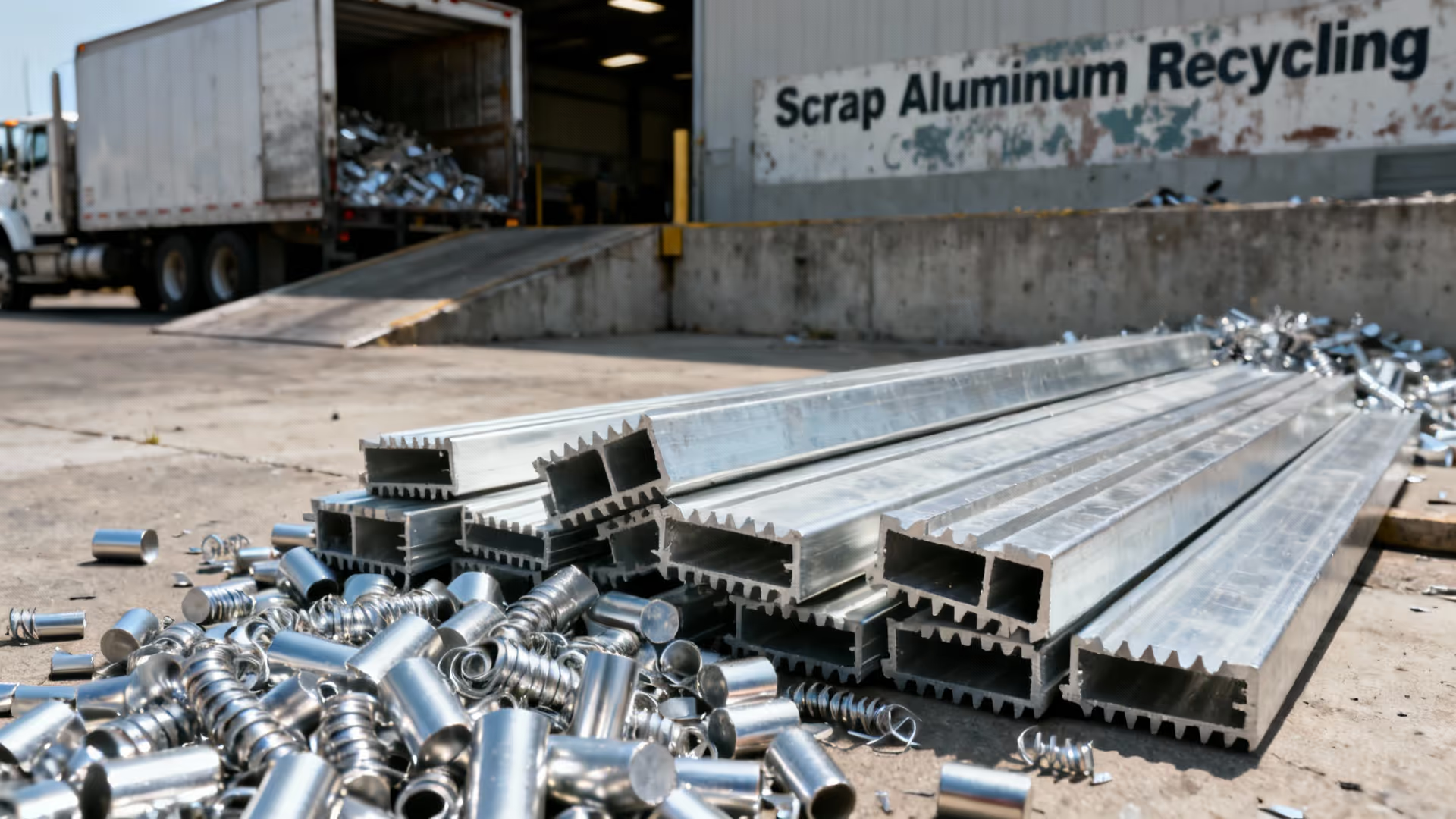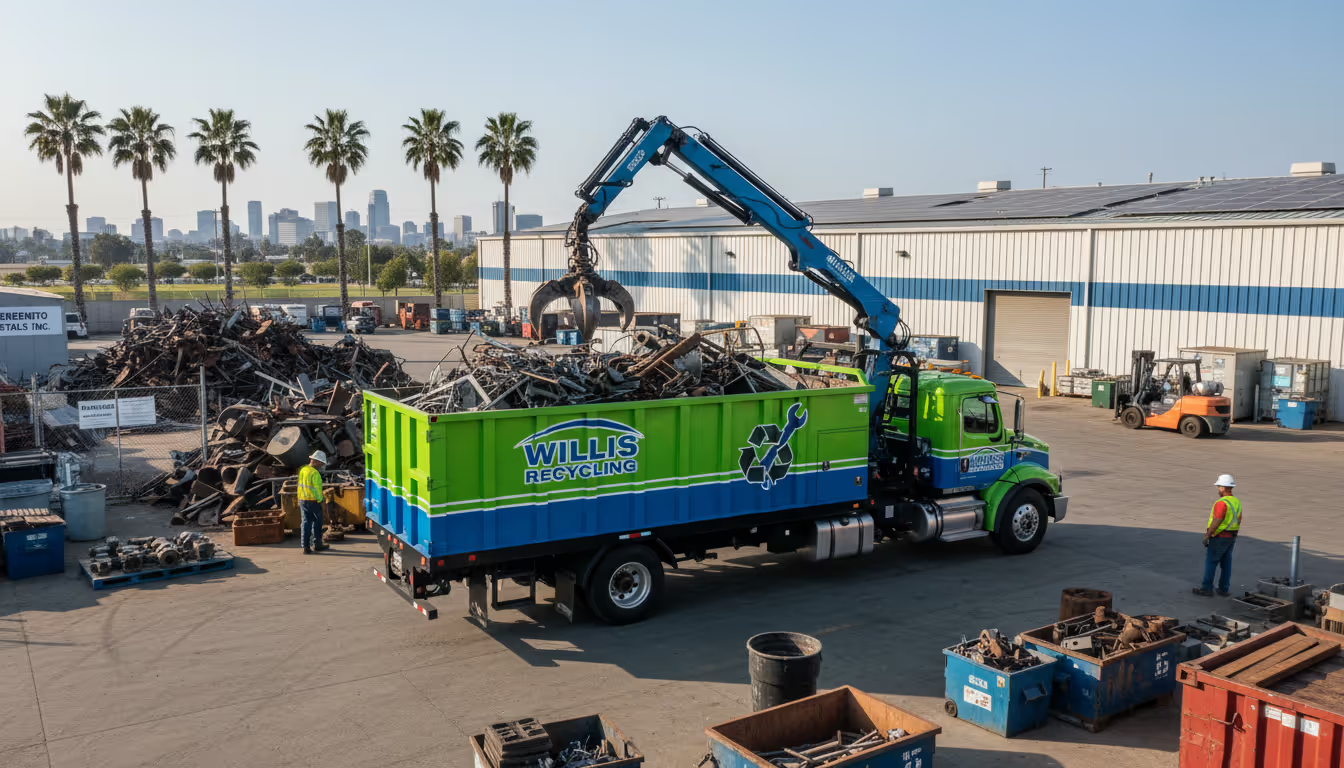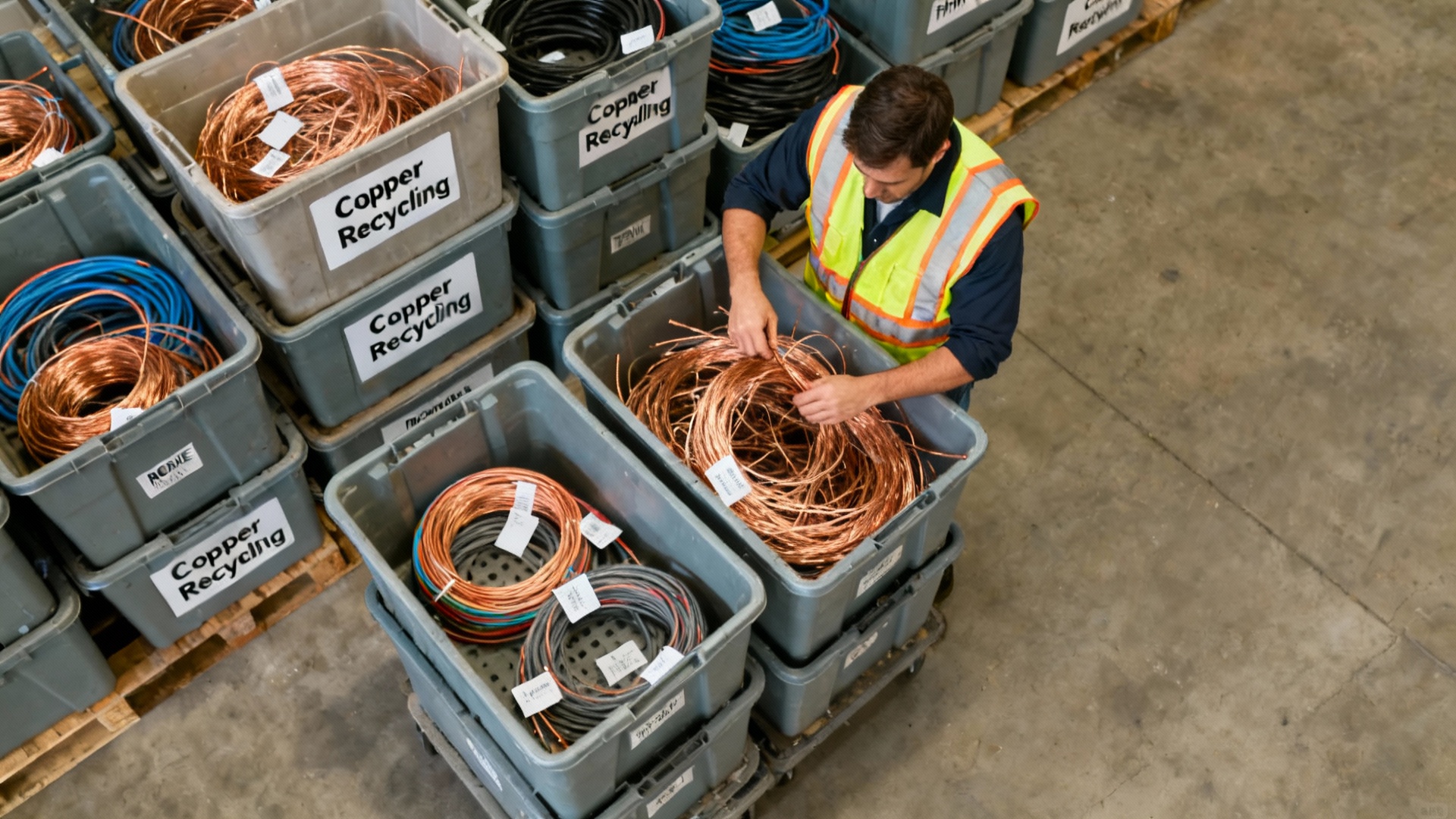Look, we get it. You're running a manufacturing operation, not a recycling center. Those bins of aluminum turnings piling up near your CNC machines? The stack of rejected extrusions in the back corner? They're taking up space you need for actual production.
We've been picking up aluminum scrap from Sacramento manufacturers since we started Willis Recycling, and we've learned a few things about what actually matters to operations folks. You don't need a lecture about the circular economy. You need someone who understands the difference between 6063 and 6061, knows that turnings contaminated with cutting fluid require different handling, and won't waste your time with residential-scale service. When businesses search for aluminum scrap recycling Sacramento, they’re usually facing these exact issues.
The Aluminum Your Shop Actually Generates
Most Sacramento manufacturing facilities produce one or more of these aluminum forms. Understanding what you've got helps streamline the whole process.
Extrusions: The Window Frame Stuff (and Everything Else)
Aluminum extrusions are those shaped profiles created by heating aluminum and forcing it through a die—think window frames, structural tubing, industrial rail systems. The vast majority use 6063 alloy for architectural applications or 6061 for parts requiring higher strength.[1][2]
Here's what actually affects your returns: bare 6063 extrusions with no paint, anodizing, or plastic attachments bring premium pricing.[3] Your painted or coated extrusions still have value, but they need extra processing. Same deal with anodized material—still acceptable, just priced differently.[4]
We had one fabricator in Natomas who'd been throwing painted extrusions in the general scrap bin for years. Once we showed him the price difference between mixed scrap and properly separated painted extrusions, he started keeping them separate. More money for the same material.
Plate and Sheet: The Flat Stuff
Aluminum plate—defined as material with a minimum thickness of 0.015 inches (not 0.15, that's a typo you'll see in some specs)—comes from cutting operations, rejected parts, or leftover stock.[5][6] The key requirement: keep it free from wire, screen material, and non-metallic junk.[7]
A local aerospace subcontractor we work with generates substantial plate offcuts from their waterjet operations. Clean material, known alloy (6061-T6), easy to handle. That's the ideal scenario.
Turnings: The Messy Reality of Machining
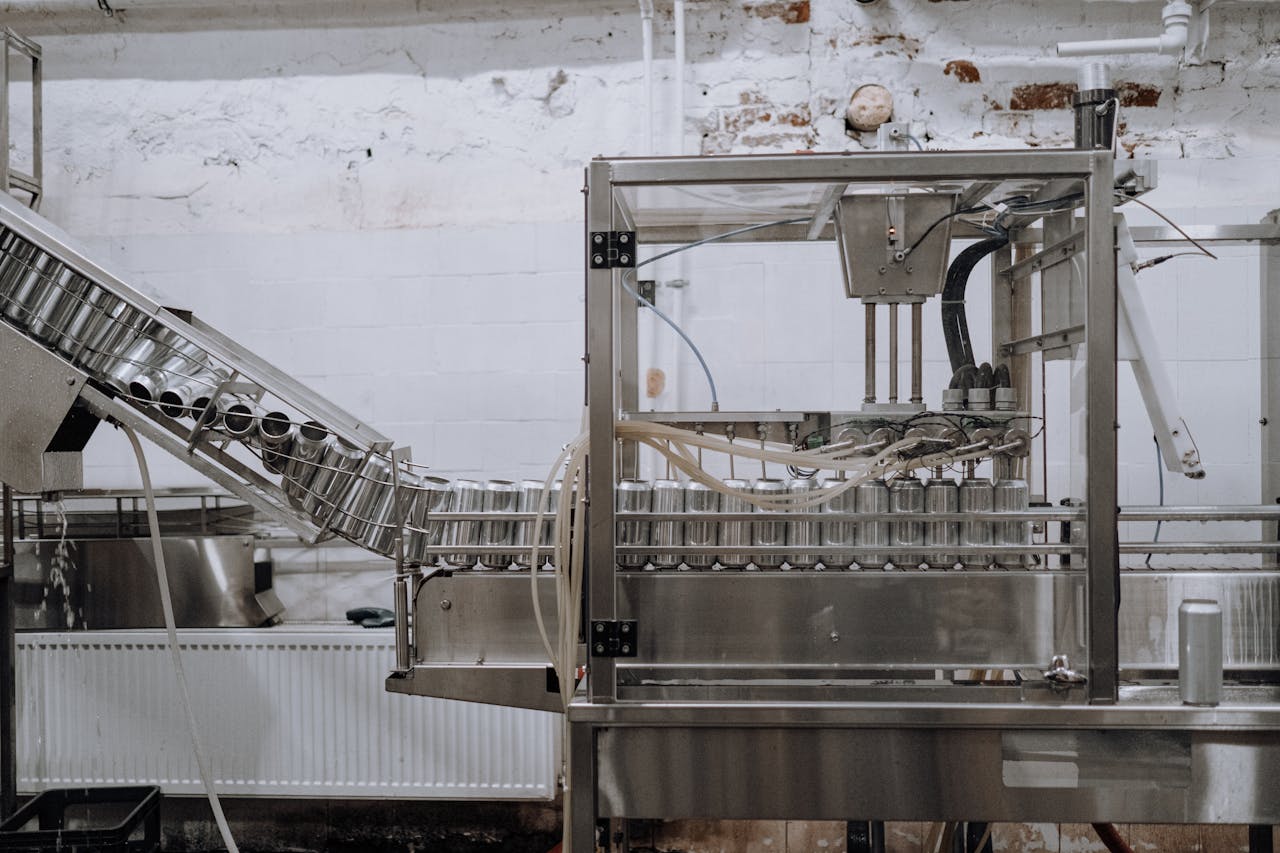
CNC turnings, chips, and borings are where things get interesting. These materials are prone to contamination from the cutting fluids and coolants used during machining.[8]
Clean aluminum turnings contain 96-99% aluminum and get classified under industry codes like TEENS.[9] But—and this matters—mixed aluminum turnings with multiple alloys face deductions if more than 3% of the material consists of fines that pass through a 20-mesh screen.[10]
One machine shop we serve installed a simple drainage system in their turning collection bins. The fluids drain off over a few days, improving material cleanliness and their eventual returns. Small change, noticeable difference.
Contamination Standards That Actually Matter
The aluminum recycling industry operates on specific contamination thresholds. Knowing these helps you stage material properly.
The 1% Rule
For aluminum extrusions and plate, oil and grease contamination cannot exceed 1% of total weight.[11] Cast aluminum allows up to 2%.[12] This matters most for your turnings—those machining fluids add up fast.
Some shops use briquetting machines that compress turnings and squeeze out cutting fluids. The resulting "pucks" are cleaner, denser, easier to transport, and command better pricing.[13] Worth considering if you're generating substantial volumes.
Separation Pays
Mixed aluminum of multiple alloys is fine. We handle it all the time. But separating different grades when practical typically improves returns. Keep your 6063 window extrusions away from 6061 structural parts if you can. Store turnings separately from sheet stock. Pull off steel fasteners, rubber gaskets, and plastic end caps.[14]
Think of it this way: every minute your employees spend removing obvious contaminants is time we don't spend processing mixed material. That difference shows up in pricing.
How Recurring Pickups Actually Work
Manufacturing scrap doesn't accumulate on a convenient schedule. That's why we offer flexible recurring options rather than just one-time collections—one of the reasons many manufacturers looking for aluminum scrap recycling Sacramento choose us.
Weekly pickups make sense for high-volume CNC operations producing substantial turnings. Bi-weekly collections work for mid-size fabricators. Monthly pickups suit operations with slower accumulation or those consolidating multiple aluminum forms.
For partners on recurring schedules, we can place collection containers on-site. The specifics depend on your volume, floor space, and how material accumulates. A Roseville manufacturer we work with has three different bins—one for extrusions, one for plate, one for turnings. When we roll up every two weeks, the material's already sorted and staged. In and out in twenty minutes.
The recurring schedule also handles your compliance paperwork. California facilities need documented recycling service records for AB 341 business recycling requirements.[15] Regular pickups create that paper trail automatically.
Why This Actually Matters (Beyond Clearing Floor Space)
Aluminum recycling uses 95% less energy than producing new aluminum from bauxite ore.[16] That's not marketing hype—it's verified data from the International Aluminium Institute. The energy reduction translates directly to emissions: recycled aluminum production generates about 0.52 tonnes of CO2 per tonne produced, compared to 15.1 tonnes for primary aluminum.[17][18]
About 75% of all aluminum ever produced remains in use today, cycling through the manufacturing ecosystem repeatedly without quality loss.[19] Every bin of turnings or stack of extrusion cutoffs you recycle contributes to that material flow.
From a practical standpoint, regular aluminum recycling frees up warehouse space, reduces waste handling costs, and qualifies commercial volumes for fair evaluation. Some manufacturers are surprised to learn their "waste" material has value beyond just clearing floor space.
Sacramento's Manufacturing Scene and Aluminum Use
Sacramento and the Central Valley host numerous manufacturing operations working extensively with aluminum—aerospace component machining, construction material fabrication, architectural extrusion cutting, food processing equipment manufacturing. The concentration of aluminum-intensive manufacturing makes efficient recycling infrastructure essential.[20] This is also why demand for aluminum scrap recycling Sacramento continues to rise.
Most facilities work with the same core alloys: 6063 for general extrusions, 6061 for structural applications, various casting alloys for specific components. This consistency helps streamline processing.
Our Service Model for Commercial Operations
We've designed our pickup service around what actually works for manufacturing operations:
On-Site Assessment: We come to your facility, look at what you're generating, understand your accumulation patterns, and recommend a realistic pickup schedule. No obligation, no pressure. Just practical evaluation.
Grade-Specific Knowledge: We know the difference between alloys, understand contamination thresholds for different forms, and can guide you on staging practices that maintain value.
Flexible Scheduling: One-time cleanup for a facility decommission? Weekly collections for ongoing production? We work around your operational schedule, not the other way around.
Documentation: Weight tickets at pickup. Disposal records for compliance. Internal tracking support. Whatever your audit requirements need.
Commercial Focus: We handle business volumes. Our mobile service is built for manufacturers, fabricators, and industrial operations—not residential drop-offs.
Preparing Material for Pickup
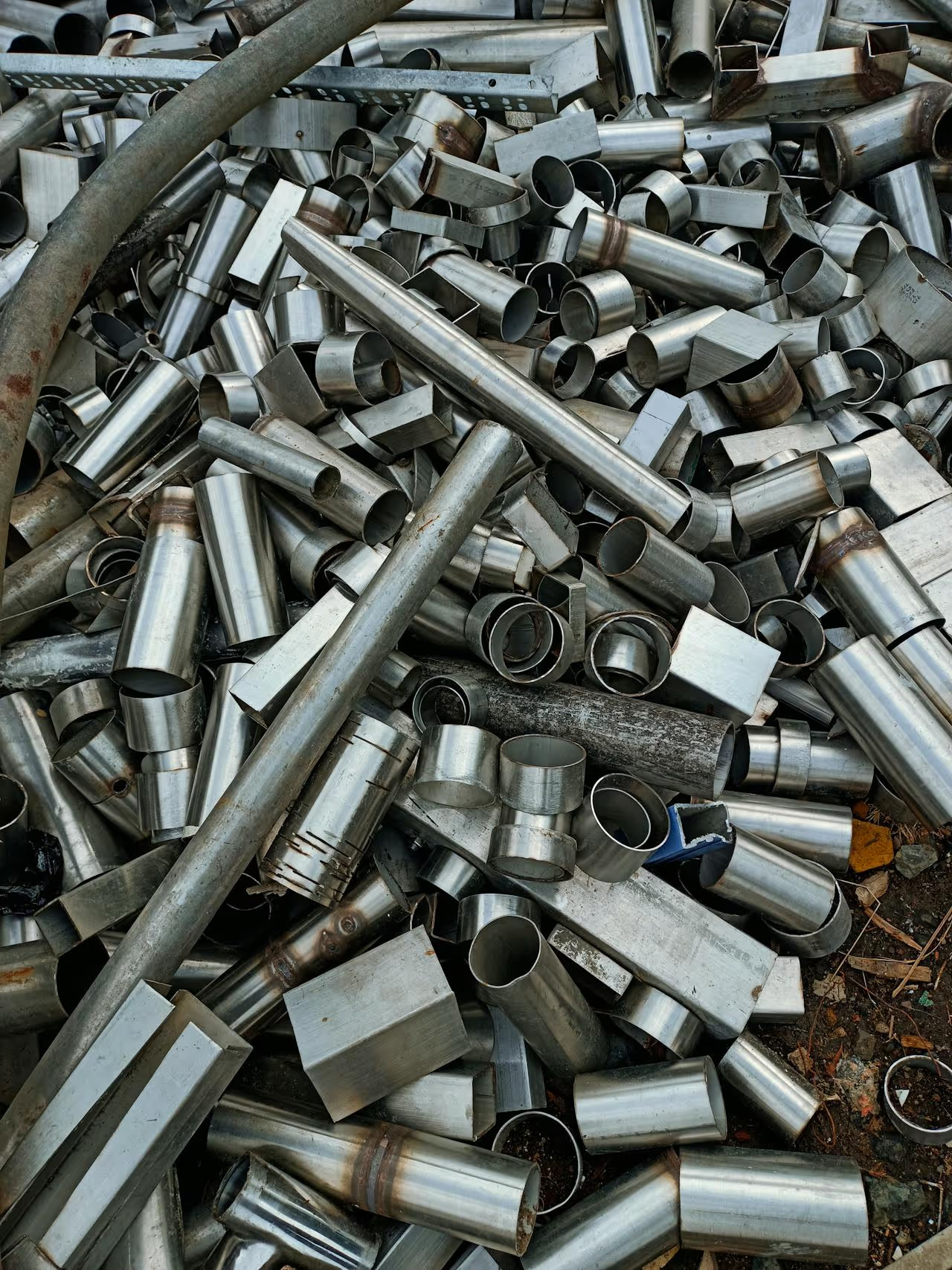
A few practical steps make pickups smoother:
Separate by form when practical. Extrusions in one area, plate in another, turnings in designated bins.
Remove obvious attachments—rubber, plastic, wood, steel fasteners—when it's practical to do so. Don't obsess over every last screw, but pull off the easy stuff.
Drain fluids from turnings. Let gravity do the work over a few days, or set up a simple drainage system in your collection bins.
Communicate volume so we bring appropriate equipment. "Three gaylords of turnings" is more helpful than "some aluminum."
Ensure access—loading dock clearance, truck accessibility, gate codes, whatever we need to know.
You don't need to sort by exact alloy. We can handle mixed aluminum. But basic separation by form streamlines everything.
Getting Started
To schedule an on-site assessment, contact Willis Recycling. We'll evaluate your materials, discuss your production patterns, and recommend a pickup schedule that keeps your operation running smoothly.
Sacramento's manufacturing community generates quality aluminum scrap that deserves professional handling. We're here to help you manage that material efficiently, maintain compliance documentation, and keep your valuable aluminum cycling through the manufacturing ecosystem.
The goal isn't just clearing floor space—though that helps. It's ensuring Sacramento's industrial aluminum returns to productive use while reducing the energy and emissions associated with primary production. You're manufacturing actual products. Let us handle getting the scrap back into circulation.
Frequently Asked Questions
Does Willis Recycling buy aluminum from Sacramento manufacturers?
For qualifying commercial volumes and grades, yes. We provide fair evaluation of industrial aluminum including extrusions, plate, and turnings. Contact us for an on-site assessment where we'll discuss your specific materials and volumes. The evaluation depends on current market conditions, material cleanliness, alloy types, and accumulation patterns. We focus on establishing recurring relationships with manufacturers rather than one-off transactions.
What are the contamination limits for different aluminum types?
Aluminum extrusions and plate must keep oil and grease contamination under 1% of total weight. Aluminum castings allow up to 2%.[21] Material should be free from steel attachments, plastic, rubber, and excessive dirt. Clean turnings drain of cutting fluids command better pricing than oil-saturated material. The cleaner and better-separated your aluminum, the better your evaluation will be.
Can you provide containers for on-site aluminum collection?
Yes, for partners with regular pickup agreements, we can place collection containers on-site. Container options depend on your volume, available floor space, and how material accumulates. During your facility assessment, we'll discuss container placement and determine what makes sense for your operation. Some manufacturers prefer their own bins; others benefit from our containers.
How should CNC shops prepare aluminum turnings for pickup?
Let cutting fluids drain from turnings before collection—excess fluids affect both weight and contamination levels. Store turnings in labeled bins separate from other aluminum forms. If you generate high volumes, consider a briquetting system that compresses turnings and removes fluids, creating denser material that's easier to transport. Keep turnings free from excessive steel chips, plastic, or other shop debris. Designate a collection area with proper drainage if possible.
What documentation do you provide for aluminum scrap pickups?
We provide weight tickets at pickup showing pounds or tons collected, material type, and service date. For manufacturers requiring detailed records for internal tracking or compliance, we customize documentation to match your needs. Sacramento facilities must maintain service records demonstrating proper recycling practices per AB 341.[22] Our documentation supports those requirements and helps you track scrap generation patterns over time.
What's the minimum volume required for commercial aluminum pickup in Sacramento?
We focus on commercial and industrial volumes—typical manufacturing operations generate enough aluminum for pickup services whether from ongoing production or facility projects. Specific minimums depend on material type, location accessibility, and pickup frequency. A one-time pickup might require larger volumes than recurring collections. During your on-site assessment, we'll evaluate your accumulation rates and recommend a pickup schedule that makes economic sense.
Works Cited
[1] Greenway Metal Recycling — "Types of Industrial Scrap Aluminum." https://greenwaymetalrecycling.com/knowing-the-different-types-of-scrap-aluminum/. Published: 2025-08-12. Accessed: 2025-11-18.
[2] RecycleInMe — "Knowing the Different Grades of Aluminum Scrap." https://scrapnews.recycleinme.com/amp/newsdetails-638.aspx. Published: 2022-03-12. Accessed: 2025-11-18.
[3] BL Duke — "Aluminum Recycling Specifications." https://www.blduke.com/aluminum-scrap-recycling-specifications/. Published: 2021-08-05. Accessed: 2025-11-18.
[4] BL Duke — "Aluminum Recycling Specifications." https://www.blduke.com/aluminum-scrap-recycling-specifications/. Published: 2021-08-05. Accessed: 2025-11-18.
[5] RAM Iron & Metal Inc. — "Scrap Aluminum Recycling Specifications." https://www.ramiron.com/aluminum/. Published: 2023-05-23. Accessed: 2025-11-18.
[6] ISRI — "Scrap Specifications Circular 2023." https://www.isrispecs.org/wp-content/uploads/2023/05/ISRI-Scrap-Specifications-Circular-updated-1.pdf. Published: 2023-05. Accessed: 2025-11-18.
[7] BL Duke — "Aluminum Recycling Specifications." https://www.blduke.com/aluminum-scrap-recycling-specifications/. Published: 2021-08-05. Accessed: 2025-11-18.
[8] AlCircle — "Types of aluminium scrap and their sources: A brief guide." https://www.alcirclebiz.com/blogs/types-of-aluminium-scrap-and-their-sources. Accessed: 2025-11-18.
[9] RecycleInMe — "Knowing the Different Grades of Aluminum Scrap." https://scrapnews.recycleinme.com/amp/newsdetails-638.aspx. Published: 2022-03-12. Accessed: 2025-11-18.
[10] BL Duke — "Aluminum Recycling Specifications." https://www.blduke.com/aluminum-scrap-recycling-specifications/. Published: 2021-08-05. Accessed: 2025-11-18.
[11] BL Duke — "Aluminum Recycling Specifications." https://www.blduke.com/aluminum-scrap-recycling-specifications/. Published: 2021-08-05. Accessed: 2025-11-18.
[12] BL Duke — "Aluminum Recycling Specifications." https://www.blduke.com/aluminum-scrap-recycling-specifications/. Published: 2021-08-05. Accessed: 2025-11-18.
[13] BL Duke — "Aluminum Recycling Specifications." https://www.blduke.com/aluminum-scrap-recycling-specifications/. Published: 2021-08-05. Accessed: 2025-11-18.
[14] Okon Recycling — "Scrap Metal Drop-off Rules: What to Know Before You Go." https://www.okonrecycling.com/industrial-scrap-metal-recycling/steel-and-aluminum/scrap-metal-drop-off-rules/. Published: 2025-05-01. Accessed: 2025-11-18.
[15] CalRecycle — "AB 341 Mandatory Commercial Recycling." https://calrecycle.ca.gov/recycle/commercial/. Accessed: 2025-11-18.
[16] The Aluminum Association — "Sustainability – Recycling." https://www.aluminum.org/Recycling. Accessed: 2025-11-18.
[17] Okon Recycling — "What is Aluminum Recycling and Why Analyze Its Costs?" https://www.okonrecycling.com/industrial-scrap-metal-recycling/steel-and-aluminum/aluminum-recycling-costs/. Published: 2025-06-05. Accessed: 2025-11-18.
[18] International Aluminium Institute — "Greenhouse Gas Emissions and Recycling." https://international-aluminium.org/landing/as-well-as-aluminium-recycling-saving-95-of-the-energy-needed-for-primary-aluminium-production-the-recycling-process-saves-a-similar-percentage-in-greenhouse-gas-emissions/. Published: 2024-10-29. Accessed: 2025-11-18.
[19] Novelis — "Top Five Sustainable Attributes of Aluminum." https://novelis.com/top-five-sustainable-attributes-of-aluminum-a-closer-look-at-aluminums-environmental-benefits/. Published: 2024-10-29. Accessed: 2025-11-18.
[20] Industrial Metal Service — "Metal Supplier in Sacramento." https://industrialmetalservice.com/metal-supplier-in-sacramento/. Published: 2024-11-15. Accessed: 2025-11-18.
[21] BL Duke — "Aluminum Recycling Specifications." https://www.blduke.com/aluminum-scrap-recycling-specifications/. Published: 2021-08-05. Accessed: 2025-11-18.
[22] CalRecycle — "AB 341 Mandatory Commercial Recycling." https://calrecycle.ca.gov/recycle/commercial/. Accessed: 2025-11-18.
